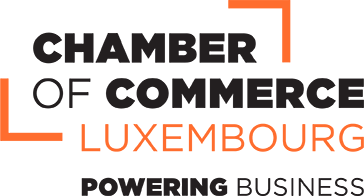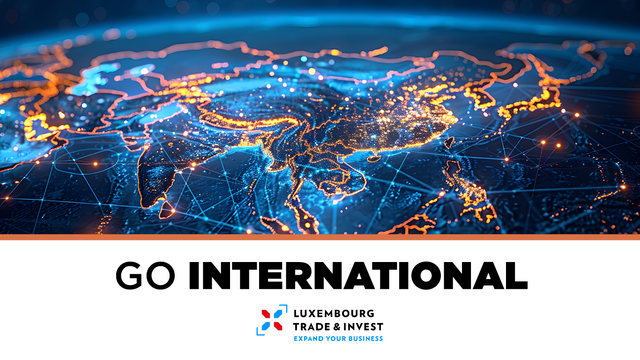
Chapitres
Known as Persia until 1935, Iran became an Islamic republic in 1979 after the ruling monarchy was overthrown and Shah Mohammad Reza PAHLAVI was forced into exile. Conservative clerical forces led by Ayatollah Ruhollah KHOMEINI established a theocratic system of government with ultimate political authority vested in a learned religious scholar referred to commonly as the Supreme Leader who, according to the constitution, is accountable only to the Assembly of Experts (AOE) - a popularly elected 86-member body of clerics. US-Iranian relations became strained when a group of Iranian students seized the US Embassy in Tehran in November 1979 and held embassy personnel hostages until mid-January 1981. The US cut off diplomatic relations with Iran in April 1980. During the period 1980-88, Iran fought a bloody, indecisive war with Iraq that eventually expanded into the Persian Gulf and led to clashes between US Navy and Iranian military forces. Iran has been designated a state sponsor of terrorism for its activities in Lebanon and elsewhere in the world and remains subject to US, UN, and EU economic sanctions and export controls because of its continued involvement in terrorism and concerns over possible military dimensions of its nuclear program. Following the election of reformer Hojjat ol-Eslam Mohammad KHATAMI as president in 1997 and a reformist Majles (legislature) in 2000, a campaign to foster political reform in response to popular dissatisfaction was initiated. The movement floundered as conservative politicians, supported by the Supreme Leader, unelected institutions of authority like the Council of Guardians, and the security services reversed and blocked reform measures while increasing security repression.
Starting with nationwide municipal elections in 2003 and continuing through Majles elections in 2004, conservatives reestablished control over Iran's elected government institutions, which culminated with the August 2005 inauguration of hardliner Mahmud AHMADI-NEJAD as president. His controversial reelection in June 2009 sparked nationwide protests over allegations of electoral fraud, but the protests were quickly suppressed. Deteriorating economic conditions due primarily to government mismanagement and international sanctions prompted at least two major economically based protests in July and October 2012, but Iran's internal security situation remained stable. President AHMADI-NEJAD's independent streak angered regime establishment figures, including the Supreme Leader, leading to conservative opposition to his agenda for the last year of his presidency, and an alienation of his political supporters. In June 2013 Iranians elected a moderate conservative cleric Dr. Hasan Fereidun RUHANI to the presidency. He is a longtime senior member in the regime, but has made promises of reforming society and Iran's foreign policy. The UN Security Council has passed a number of resolutions calling for Iran to suspend its uranium enrichment and reprocessing activities and comply with its IAEA obligations and responsibilities, and in July 2015 Iran and the five permanent members, plus Germany (P5+1) signed the Joint Comprehensive Plan of Action (JCPOA) under which Iran agreed to restrictions on its nuclear program in exchange for sanctions relief. Iran held elections in 2016 for the AOE and Majles, resulting in a conservative-controlled AOE and a Majles that many Iranians perceive as more supportive of the RUHANI administration than the previous, conservative-dominated body. RUHANI was reelected president in May 2017.
Source: The CIA World Factbook - Iran
Indicateurs clés
- Surface
- 1,648,195 km2
- Population
- 85,888,910 (July 2021 est.)
- Type de gouvernement
- theocratic republic
- Langues
- Persian Farsi (official), Azeri and other Turkic dialects, Kurdish, Gilaki and Mazandarani, Luri, Balochi, Arabic
- PIB
- $191.718 trillion (2020 est.)
- Taux de croissance
- 1.7% (2020 est.)
- HDI
- N/A
- Capitale
- Teheran
Indicateurs macroéconomiques
Iran's economy is marked by statist policies, inefficiencies, and reliance on oil and gas exports, but Iran also possesses significant agricultural, industrial, and service sectors. The Iranian government directly owns and operates hundreds of state-owned enterprises and indirectly controls many companies affiliated with the country's security forces. Distortions - including corruption, price controls, subsidies, and a banking system holding billions of dollars of non-performing loans - weigh down the economy, undermining the potential for private-sector-led growth.
Private sector activity includes small-scale workshops, farming, some manufacturing, and services, in addition to medium-scale construction, cement production, mining, and metalworking. Significant informal market activity flourishes and corruption is widespread.
The lifting of most nuclear-related sanctions under the Joint Comprehensive Plan of Action (JCPOA) in January 2016 sparked a restoration of Iran’s oil production and revenue that drove rapid GDP growth, but economic growth declined in 2017 as oil production plateaued. The economy continues to suffer from low levels of investment and declines in productivity since before the JCPOA, and from high levels of unemployment, especially among women and college-educated Iranian youth.
In May 2017, the re-election of President Hasan RUHANI generated widespread public expectations that the economic benefits of the JCPOA would expand and reach all levels of society. RUHANI will need to implement structural reforms that strengthen the banking sector and improve Iran’s business climate to attract foreign investment and encourage the growth of the private sector. Sanctions that are not related to Iran’s nuclear program remain in effect, and these—plus fears over the possible re-imposition of nuclear-related sanctions—will continue to deter foreign investors from engaging with Iran.
Source: The CIA World Factbook - Economic Overview
IMF Statistics:
| Subject descriptor | 2023 | 2024 | 2025 | 2026 | 2027 |
|---|---|---|---|---|---|
|
All Items, Consumer price index (CPI), Period average, percent change Percent (Units) |
40.692 |
32.487 |
42.351 |
41.588 |
33.75 |
|
Current account balance (credit less debit), Percent of GDP Percent (Units) |
2.038 |
3.202 |
1.8 |
2.0 |
2.6 |
|
Current account balance (credit less debit), US dollar US dollar (Billions) |
8.592 |
13.34 |
6.417 |
7.513 |
10.827 |
|
Exports of goods and services, Volume, Free on board (FOB), Percent change Percent (Units) |
8.968 |
11.41 |
-0.992 |
8.85 |
7.817 |
|
Gross domestic product (GDP), Constant prices, Percent change Percent (Units) |
5.332 |
3.663 |
0.649 |
1.112 |
1.612 |
|
Gross domestic product (GDP), Current prices, Per capita, US dollar US dollar (Units) |
4915.374 |
4810.048 |
4074.444 |
4250.247 |
4664.634 |
|
Gross domestic product (GDP), Current prices, US dollar US dollar (Billions) |
421.547 |
416.676 |
356.513 |
375.644 |
416.433 |
|
Imports of goods and services, Volume, Cost insurance freight (CIF), Percent change Percent (Units) |
13.887 |
10.762 |
-5.126 |
1.922 |
6.109 |
|
Unemployment rate |
8.075 |
7.55 |
9.2 |
9.2 |
9.0 |
Source: The IMF Statistics - Iran
Le Luxembourg et le pays
Existing conventions and agreements
Non double taxation agreement
In order to promote international economic and financial relations in the interest of the Grand Duchy of Luxembourg, the Luxembourg government negotiates bilateral agreements for the avoidance of double taxation and prevent fiscal evasion with respect to Taxes on Income and on fortune with third countries.
None
Air Services agreement
None
Informations supplémentaires
Foreign Trade
The Statec Foreign Trade statistics provide information on the trade of goods - by product and by country. This information is collected respectively through the INTRASTAT declaration and on the basis of customs documents.
You can see the statistics on the website of the Statec.
Contact points in Iran
Luxembourg is represented by the Ambassade Royale des Pays-Bas à Téhéran
Competent post for consular affairs by Ambassade du Royaume de Belgique à Téhéran
Source: Ministry of Foreign Affairs of Luxembourg
Country risk as defined by Office du Ducroire for Iran
Ducroire is the only credit insurer covering open account deals in over 200 countries. A rating on a scale from 1 to 7 shows the intensity of the political risk. Category 1 comprises countries with the lowest political risk and category 7 countries with the highest. Macroeconomics experts also assess the repayment climate for all buyers in a country.
Link: Ducroire Office - Country Risk for Iran



